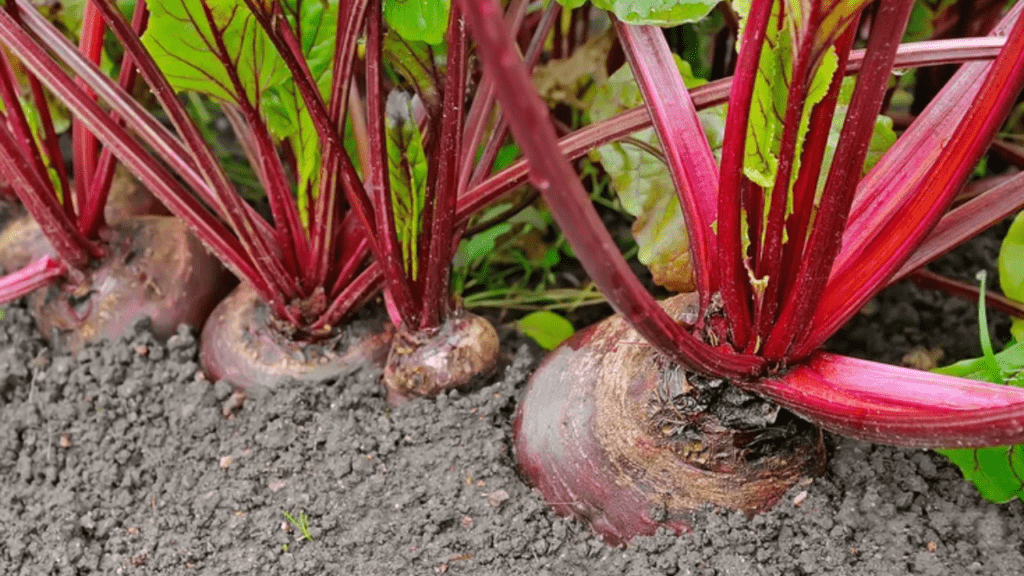
Best Companion Planting for Beets: Improve Growth and Flavor Naturally
Companion planting is a time-honored gardening technique that involves planting different crops in close proximity to one another in order to benefit each other in various ways. When it comes to beets, companion planting can improve their growth and flavor naturally, leading to a more bountiful and delicious harvest. In this article, we’ll discuss the best companion plants for beets, as well as the benefits of companion planting and strategies for implementing this technique in your own garden. Whether you’re a seasoned gardener or just starting out, companion planting for beets can be a game-changer for your garden.
Companion planting is a great way to naturally improve the growth and flavor of your beets in your garden. By planting certain crops in close proximity to each other, you can create a mutually beneficial environment that promotes healthy growth and discourages pests and disease. Some of the best companion plants for beets include lettuce, onions, and garlic. Lettuce can help to shade the soil around the beets, keeping their roots cool and moist. Onions and garlic can repel pests that may otherwise harm the beets. Additionally, planting aromatic herbs like dill and mint can also help to deter pests and attract beneficial insects to the garden. Overall, companion planting for beets can lead to a more successful and enjoyable gardening experience. So, consider giving it a try in your own garden!
Table of Contents
ToggleBenefits of Companion Planting for Beets
Enhanced Growth and Yield
How certain plants can promote healthier beet growth.
Companion planting can be a great way to promote healthier beet growth. By planting certain crops in close proximity to each other, you can create a mutually beneficial environment that promotes healthy growth and discourages pests and disease. Some of the best companion plants for beets include lettuce, onions, and garlic. Lettuce can help to shade the soil around the beets, keeping their roots cool and moist. Onions and garlic can also help to repel pests that may otherwise harm the beets. Additionally, planting aromatic herbs like dill and mint can also help to deter pests and attract beneficial insects to the garden. Overall, companion planting for beets can lead to a more successful and enjoyable gardening experience. So, consider giving it a try in your own garden and see the benefits of enhanced growth and yield for yourself.
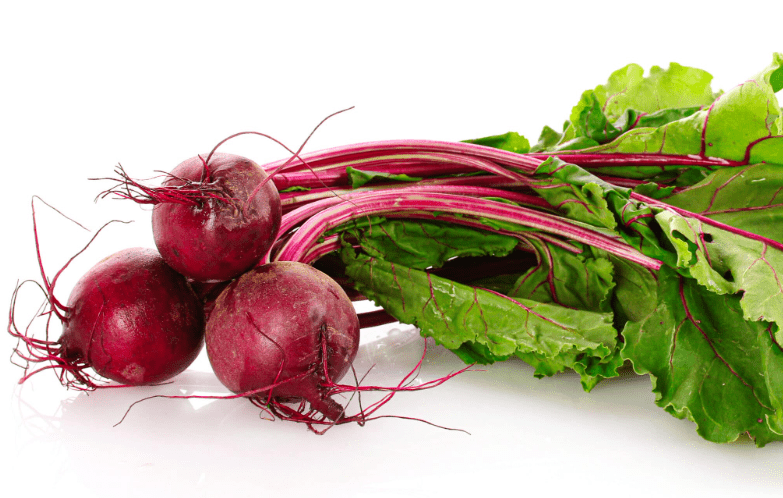
Natural Pest Control
Plants that repel pests harmful to beets.
Companion planting is a great way to naturally repel pests that can be harmful to beets. By planting certain crops in close proximity to each other, you can create a mutually beneficial environment that promotes healthy growth and discourages pests and disease. Some of the best companion plants for beets include lettuce, onions, and garlic. Lettuce can help to shade the soil around the beets, keeping their roots cool and moist. Onions and garlic can also help to repel pests that may otherwise harm the beets. Additionally, planting aromatic herbs like dill and mint can also help to deter pests and attract beneficial insects to the garden. Overall, companion planting for beets can lead to a more successful and enjoyable gardening experience. So, consider giving it a try in your own garden and see the benefits of enhanced growth and yield for yourself.
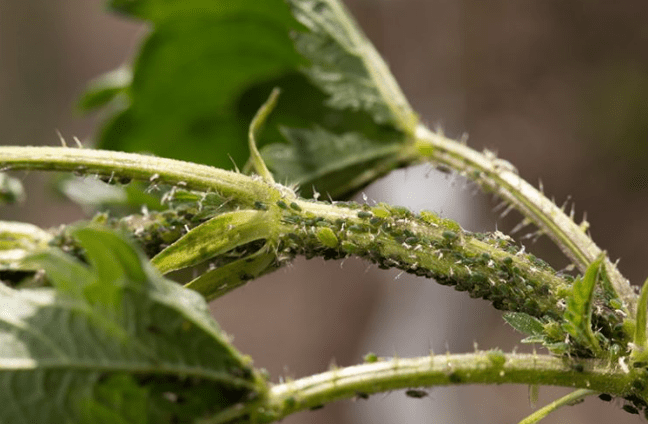
Improved Soil Health
Nitrogen-fixing and nutrient-sharing plants.
One of the best ways to promote healthy plant growth and discourage pests and disease in your garden is through companion planting. By planting certain crops in close proximity to each other, you can create a mutually beneficial environment. For example, nitrogen-fixing plants such as legumes can help to replenish the soil with essential nutrients, while nutrient-sharing plants can help to improve the overall health of the soil. Some of the best companion plants for beets include lettuce, onions, and garlic. Lettuce can help to shade the soil around the beets, keeping their roots cool and moist. Onions and garlic can also help to repel pests that may otherwise harm the beets. Additionally, planting aromatic herbs like dill and mint can also help to deter pests and attract beneficial insects to the garden. Overall, companion planting for beets can lead to a more successful and enjoyable gardening experience. So, consider giving it a try in your own garden and see the benefits of enhanced growth and yield for yourself.
Choosing the Right Companion Plants for Beets
Plants That Enhance Beet Growth
Species that provide shade, support, or nutrient enrichment.
Companion planting is a great way to enhance the growth and productivity of your garden. Certain species of plants can provide shade, support, or nutrient enrichment to help other plants thrive. For example, nitrogen-fixing plants such as legumes can help to replenish the soil with essential nutrients, while nutrient-sharing plants can help to improve the overall health of the soil. Some of the best companion plants for beets include lettuce, onions, and garlic. Lettuce can help to shade the soil around the beets, keeping their roots cool and moist. Onions and garlic can also help to repel pests that may otherwise harm the beets. Additionally, planting aromatic herbs like dill and mint can also help to deter pests and attract beneficial insects to the garden. Overall, companion planting for beets can lead to a more successful and enjoyable gardening experience. So, consider giving it a try in your own garden and see the benefits of enhanced growth and yield for yourself.

Plants That Repel Pests
Natural pest deterrents like aromatic herbs and flowers.
Companion planting is a great way to naturally deter pests from your garden. By planting certain herbs and flowers near your crops, you can help repel harmful insects and attract beneficial ones. Aromatic herbs like dill and mint can help deter pests and attract beneficial insects, while nitrogen-fixing plants such as legumes can replenish the soil with essential nutrients. Additionally, nutrient-sharing plants can improve the overall health of the soil, leading to better plant growth. For example, planting lettuce, onions, and garlic near beets can help shade the soil, repel pests, and improve the overall health of the beets. Consider trying companion planting in your garden to enhance plant growth and yield.
Plants That Attract Beneficial Insects
Flowers and herbs that attract pollinators and predators of beet pests.
If you want to naturally deter pests from your garden, consider planting certain herbs and flowers that can help repel harmful insects and attract beneficial ones. Aromatic herbs like dill and mint can help deter pests and attract beneficial insects, while nitrogen-fixing plants such as legumes can replenish the soil with essential nutrients. Additionally, nutrient-sharing plants can improve the overall health of the soil, leading to better plant growth. For example, planting lettuce, onions, and garlic near beets can help shade the soil, repel pests, and improve the overall health of the beets. In addition to repelling pests, certain flowers and herbs can also attract beneficial insects such as pollinators and predators of beet pests. For example, planting marigolds, sunflowers, and lavender can attract bees, butterflies, and predatory insects that can help keep beet pests at bay. Consider incorporating companion planting and attracting beneficial insects into your garden to naturally enhance plant growth and yield.
Best Companion Plants for Beets
Herbs
Specific herbs that thrive alongside beets.
If you’re looking for specific herbs that thrive alongside beets, consider planting aromatic herbs like dill and mint. These herbs can help deter pests and attract beneficial insects to your garden. Additionally, nitrogen-fixing plants such as legumes can help replenish the soil with essential nutrients, leading to better plant growth. Nutrient-sharing plants like lettuce, onions, and garlic can improve the overall health of the soil and shade the soil for beets. In terms of attracting beneficial insects, consider planting marigolds, sunflowers, and lavender to attract bees, butterflies, and predatory insects that can help keep beet pests at bay. Incorporating companion planting and attracting beneficial insects into your garden can naturally enhance plant growth and yield.
Vegetables
Compatible vegetables that can be planted with beets.
When it comes to planting vegetables with beets, there are a few compatible options that can help your garden thrive. Vegetables like lettuce, onions, and garlic are great companion plants for beets. They can improve the overall health of the soil and provide shade for the beets. Additionally, legumes are nitrogen-fixing plants that can help replenish the soil with essential nutrients, leading to better plant growth. In terms of attracting beneficial insects, consider planting marigolds, sunflowers, and lavender to attract bees, butterflies, and predatory insects that can help keep beet pests at bay. Aromatic herbs like dill and mint can also thrive alongside beets, helping to deter pests and attract beneficial insects to your garden. By incorporating compatible vegetables and herbs into your garden, you can naturally enhance plant growth and yield.
Flowers
Flowering plants that benefit beets and add aesthetic value.
When it comes to planting vegetables with beets, there are several options that can benefit both the beets and add aesthetic value to your garden. Vegetables like lettuce, onions, and garlic are great companion plants for beets. They can improve the overall health of the soil and provide shade for the beets, leading to better plant growth. In addition, legumes such as peas and beans are nitrogen-fixing plants that can help replenish the soil with essential nutrients, further enhancing the growth of your beets.
In terms of attracting beneficial insects, consider planting marigolds, sunflowers, and lavender alongside your beets. These flowers can help attract bees, butterflies, and other predatory insects that can help keep beet pests at bay, while also adding visual appeal to your garden. Aromatic herbs like dill and mint can also thrive alongside beets, helping to deter pests and attract beneficial insects.
By incorporating these compatible vegetables, legumes, and flowers into your garden, you can naturally enhance the growth and yield of your beets while also adding aesthetic value to your garden space.
Companion Planting Layouts and Strategies
Interplanting
Arranging companion plants around or between beet rows.
When it comes to planting beets, it’s important to consider companion plants that can benefit their growth. Vegetables like lettuce, onions, and garlic are great companion plants for beets. They can improve the overall health of the soil and provide shade for the beets, leading to better plant growth. In addition, legumes such as peas and beans are nitrogen-fixing plants that can help replenish the soil with essential nutrients, further enhancing the growth of your beets.
In terms of attracting beneficial insects, consider planting marigolds, sunflowers, and lavender alongside your beets. These flowers can help attract bees, butterflies, and other predatory insects that can help keep beet pests at bay, while also adding visual appeal to your garden.
Aromatic herbs like dill and mint can also thrive alongside beets, helping to deter pests and attract beneficial insects. By incorporating these compatible vegetables, legumes, and flowers into your garden, you can naturally enhance the growth and yield of your beets while also adding aesthetic value to your garden space. When planning your garden layout, consider interplanting these companion plants around or between the beet rows to maximize their benefits.
Succession Planting
Timing planting for continuous harvest and optimal growth.
Timing planting for continuous harvest and optimal growth is essential for a successful garden. By staggering the planting of your beets, you can ensure a continuous supply of fresh beets throughout the growing season. This also helps to prevent a glut of produce all at once. Additionally, planting at the right time can help ensure that your beets have optimal growing conditions, leading to healthier and more productive plants. It’s important to consider the climate and seasonality when planning your planting schedule. For example, planting beets in early spring or late summer can help them avoid the heat of midsummer and produce better quality roots. By strategically timing your plantings, you can maximize the yield of your beets and enjoy a steady supply of fresh produce.
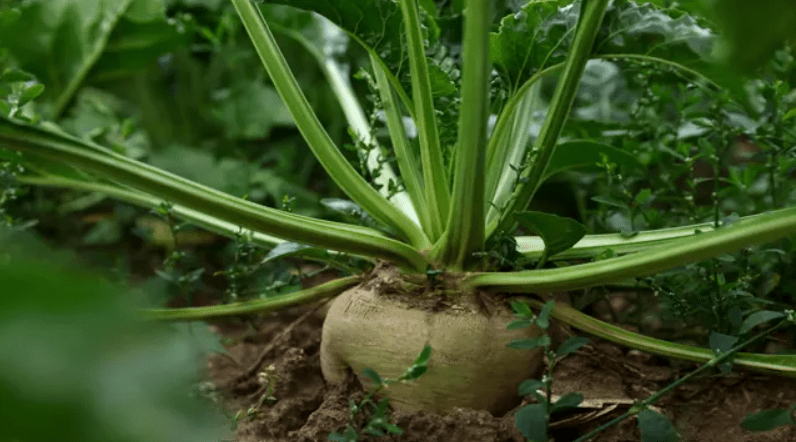
Companion Planting in Containers
Tips for pairing beets with other plants in containers or raised beds.
When it comes to pairing beets with other plants in containers or raised beds, there are a few tips to keep in mind. Beets thrive when planted with other root vegetables such as carrots and radishes, as they have similar growing conditions and do not compete for space. Herbs like dill and mint also make good companions for beets, as they can help repel pests and attract beneficial insects. It’s important to consider the height and spread of your companion plants to ensure they don’t overshadow the beets. Additionally, be mindful of the water and sunlight requirements of each plant when planning your container or raised bed layout. Overall, strategic pairing of beets with other plants can help promote healthy growth and maximize the use of limited garden space.
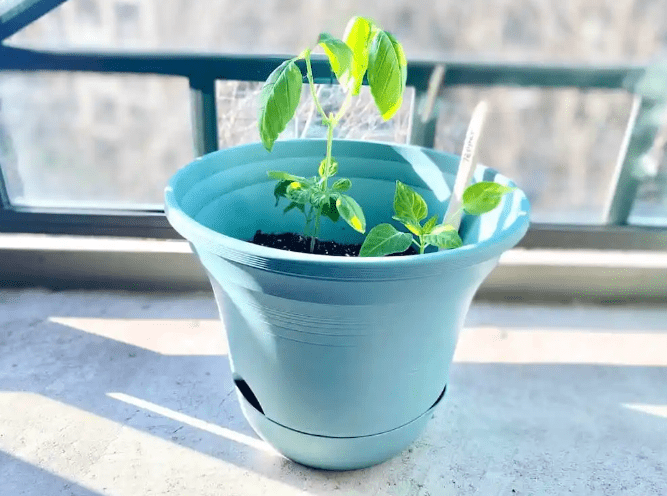
Companion Planting Tips for Beets
Complementary Growth Patterns
Matching plant heights, root depths, and water needs.
When it comes to companion planting beets in containers or raised beds, there are a few important considerations to keep in mind. Beets thrive when paired with other root vegetables such as carrots and radishes because they have similar growing conditions and do not compete for space. Additionally, herbs like dill and mint make good companions for beets as they can help repel pests and attract beneficial insects. It’s important to consider the height and spread of your companion plants to ensure they don’t overshadow the beets and to make sure they have enough room to grow. Matching plant heights, root depths, and water needs is essential when planning your container or raised bed layout to ensure that all of your plants have the space and resources they need to thrive. By carefully pairing beets with other plants, you can promote healthy growth and maximize the use of limited garden space.
Crop Rotation Considerations
Planning future plantings to maintain soil health and prevent pests.
When it comes to companion planting beets, it’s important to consider the complementary growth patterns of other plants. Beets thrive when paired with other root vegetables such as carrots and radishes because they have similar growing conditions and do not compete for space. Additionally, herbs like dill and mint make good companions for beets as they can help repel pests and attract beneficial insects. It’s important to consider the height and spread of your companion plants to ensure they don’t overshadow the beets and to make sure they have enough room to grow. Matching plant heights, root depths, and water needs is essential when planning your container or raised bed layout to ensure that all of your plants have the space and resources they need to thrive.
In addition to companion planting, it’s also important to consider crop rotation when planning future plantings. This can help maintain soil health and prevent the buildup of pests and diseases. By rotating your crops and not planting beets in the same spot every year, you can help ensure the long-term health of your garden. Thinking ahead and planning your plantings can help you maintain a healthy and productive garden.
Avoiding Incompatible Plants
Plants that may hinder beet growth or attract pests.
When planning your garden, it’s important to consider companion planting and crop rotation to ensure the health and growth of your beets. Some plants, like dill and mint, make good companions for beets as they can help repel pests and attract beneficial insects. It’s essential to consider the height and spread of companion plants to ensure they don’t overshadow the beets and have enough room to grow. Matching plant heights, root depths, and water needs is crucial when planning your container or raised bed layout. Additionally, crop rotation is important in maintaining soil health and preventing the buildup of pests and diseases. By rotating your crops and not planting beets in the same spot every year, you can ensure the long-term health of your garden. It’s important to avoid planting incompatible plants that may hinder the growth of your beets or attract pests, so careful planning is essential for a healthy and productive garden.
Practical Examples and Case Studies
Example Garden Plans
Illustrated layouts for companion planting with beets.
When planning your garden, it’s important to consider companion planting and crop rotation to ensure the health and growth of your beets. Some plants, like dill and mint, make good companions for beets as they can help repel pests and attract beneficial insects. It’s essential to consider the height and spread of companion plants to ensure they don’t overshadow the beets and have enough room to grow. Matching plant heights, root depths, and water needs is crucial when planning your container or raised bed layout. Additionally, crop rotation is important in maintaining soil health and preventing the buildup of pests and diseases. By rotating your crops and not planting beets in the same spot every year, you can ensure the long-term health of your garden. It’s important to avoid planting incompatible plants that may hinder the growth of your beets or attract pests, so careful planning is essential for a healthy and productive garden. Illustrated layouts for companion planting with beets can be found in gardening books or online resources to help you plan your garden effectively.
Real-Life Success Stories
Testimonials and experiences from gardeners who use companion planting techniques.
There are many success stories and positive experiences from gardeners who use companion planting techniques. For example, some plants, like dill and mint, make good companions for beets as they can help repel pests and attract beneficial insects. Gardeners have found that by planting these companion plants alongside their beets, they are able to reduce the need for chemical pesticides and create a more balanced ecosystem in their garden.
It’s essential for gardeners to consider the height and spread of companion plants to ensure they don’t overshadow the beets and have enough room to grow. Matching plant heights, root depths, and water needs is crucial when planning your container or raised bed layout. Additionally, gardeners have found that crop rotation is important in maintaining soil health and preventing the buildup of pests and diseases. By rotating crops and not planting beets in the same spot every year, gardeners can ensure the long-term health of their garden.
It’s important to avoid planting incompatible plants that may hinder the growth of beets or attract pests, so careful planning is essential for a healthy and productive garden. Illustrated layouts for companion planting with beets can be found in gardening books or online resources to help gardeners plan their garden effectively based on the experiences and testimonials of other successful gardeners.
Common Mistakes to Avoid
Overcrowding
Risks of planting too densely and competing for resources.
When planting beets, it’s important to avoid overcrowding and planting too densely. This can lead to the plants competing for resources such as water, sunlight, and nutrients in the soil. Overcrowding can stunt the growth of the beets and decrease their yield. It’s essential for gardeners to consider the height and spread of companion plants to ensure they don’t overshadow the beets and have enough room to grow. Matching plant heights, root depths, and water needs is crucial when planning your container or raised bed layout. Additionally, crop rotation is important in maintaining soil health and preventing the buildup of pests and diseases. By rotating crops and not planting beets in the same spot every year, gardeners can ensure the long-term health of their garden. It’s important to avoid planting incompatible plants that may hinder the growth of beets or attract pests, so careful planning is essential for a healthy and productive garden. Illustrated layouts for companion planting with beets can be found in gardening books or online resources to help gardeners plan their garden effectively based on the experiences and testimonials of other successful gardeners.
Ignoring Plant Needs
Importance of understanding each plant’s requirements for optimal growth.
It is important to understand each plant’s requirements for optimal growth. Overcrowding can stunt the growth of beets and decrease their yield. Gardeners should consider the height and spread of companion plants to ensure they don’t overshadow the beets and have enough room to grow. Matching plant heights, root depths, and water needs is crucial when planning your container or raised bed layout. Additionally, crop rotation is important in maintaining soil health and preventing the buildup of pests and diseases. By rotating crops and not planting beets in the same spot every year, gardeners can ensure the long-term health of their garden. It’s important to avoid planting incompatible plants that may hinder the growth of beets or attract pests, so careful planning is essential for a healthy and productive garden. Illustrated layouts for companion planting with beets can be found in gardening books or online resources to help gardeners plan their garden effectively based on the experiences and testimonials of other successful gardeners. Understanding and meeting the needs of each plant is essential for a successful and thriving garden.
Neglecting Maintenance
Regular care and monitoring for pests and nutrient levels.
Gardeners should consider the height and spread of companion plants to ensure they don’t overshadow the beets and have enough room to grow. Matching plant heights, root depths, and water needs is crucial when planning your container or raised bed layout. Additionally, crop rotation is important in maintaining soil health and preventing the buildup of pests and diseases. By rotating crops and not planting beets in the same spot every year, gardeners can ensure the long-term health of their garden.
It’s important to avoid planting incompatible plants that may hinder the growth of beets or attract pests, so careful planning is essential for a healthy and productive garden. Illustrated layouts for companion planting with beets can be found in gardening books or online resources to help gardeners plan their garden effectively based on the experiences and testimonials of other successful gardeners. Understanding and meeting the needs of each plant is essential for a successful and thriving garden. Neglecting maintenance can lead to pest infestations and nutrient deficiencies, so regular care and monitoring are crucial for the overall health of the garden.
In conclusion, companion planting for beets can greatly improve their growth and flavor naturally. By strategically planting companion plants alongside your beets, you can help deter pests, enhance soil fertility, and promote overall plant health. Some great companion plants for beets include garlic, onions, and lettuce. Incorporating companion planting into your beet garden can lead to a more bountiful and flavorful harvest. So, give it a try and see the difference it can make in your garden!
Frequently asked questions And Answer
Some of the best companion plants for beets include lettuce, onions, and garlic. These plants help improve the growth and flavor of beets naturally.
Companion planting can help deter pests, attract beneficial insects, and improve soil health, which can all contribute to the overall health and yield of beets.
Yes, beets can be planted near other root vegetables such as carrots and radishes. These plants can complement each other and improve overall garden health.
It’s best to avoid planting beets near pole beans and mustard plants, as they can potentially inhibit the growth of beets.
Companion plants can be planted in close proximity to beets, as long as they do not overshadow or crowd the beet plants. Proper spacing and arrangement are key for successful companion planting.
While companion planting can help reduce the need for pesticides and fertilizers, it’s still important to monitor and maintain the health of the garden with appropriate organic methods.
When companion planting with beets, consider intercropping or creating small groupings of compatible plants to maximize the benefits of companion planting.
There are many resources available, including gardening books, online articles, and local gardening workshops, that can provide in-depth information and guidance on companion planting for beets.
